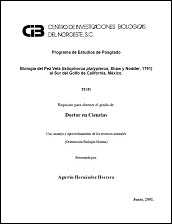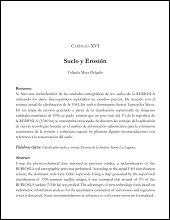The human footprint in Mexico: Physical geography and historical legacies
Autor
CHARLOTTE ELIZABETH GONZALEZ ABRAHAM
EXEQUIEL EZCURRA REAL DE AZUA
PEDRO PEÑA GARCILLAN
ALFREDO ORTEGA RUBIO
MELANIE KOLB
Juan Bezaury-Creel
Metadatos
Mostrar el registro completo del ítemResumen
"Using publicly available data on land use and transportation corridors we calculated the human footprint index for the whole of Mexico to identify large-scale spatial patterns in the anthropogenic transformation of the land surface. We developed a map of the human foot-print for the whole country and identified the ecological regions that have most transformed by human action. Additionally, we analyzed the extent to which (a) physical geography, ex-pressed spatially in the form of biomes and ecoregions, compared to (b) historical geogra-phy, expressed as the spatial distribution of past human settlements, have driven the patterns of human modification of the land. Overall Mexico still has 56% of its land surface with low impact from human activities, but these areas are not evenly distributed. The lowest values are on the arid north and northwest, and the tropical southeast, while the highest val-ues run along the coast of the Gulf of Mexico and from there inland along an east-to-west corridor that follows the Mexican transversal volcanic ranges and the associated upland pla-teau. The distribution of low- and high footprint areas within ecoregions forms a complex mosaic: the generally well-conserved Mexican deserts have some highly transformed agro-industrial areas, while many well-conserved, low footprint areas still persist in the highly-transformed ecoregions of central Mexico. We conclude that the spatial spread of the human footprint in Mexico is both the result of the limitations imposed by physical geogra-phy to human development at the biome level, and, within different biomes, of a complex history of past civilizations and technologies, including the 20th Century demographic explo-sion but also the spatial pattern of ancient settlements that were occupied by the Spanish Colony."
Colecciones
Ítems relacionados
Mostrando ítems relacionados por Título, autor o materia.
-
PROMOCIÓN DEL PERIFITON PARA EL CULTIVO DE CAMARÓN BLANCO: HACIA UNA ACUICULTURA ECOLÓGICA
DOMENICO VOLTOLINA LOBINA; JUAN MANUEL AUDELO NARANJO; MARIA DEL ROSARIO PACHECO MARGES -
Suelo y Erosión
YOLANDA LOURDES MAYA DELGADO


